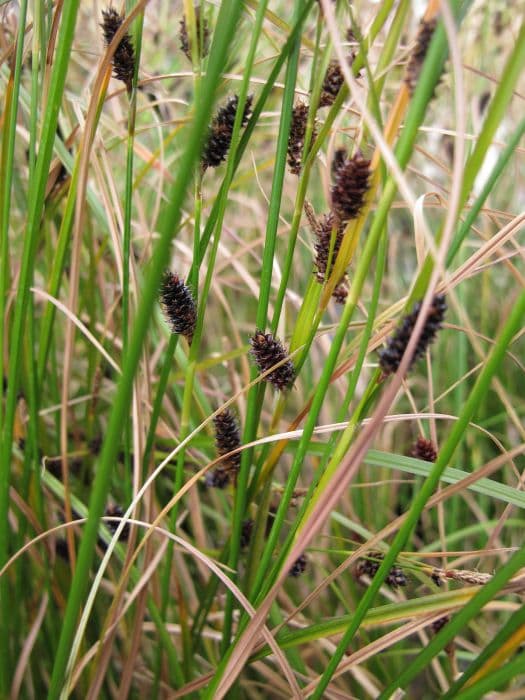Weeping sedge Carex pendula
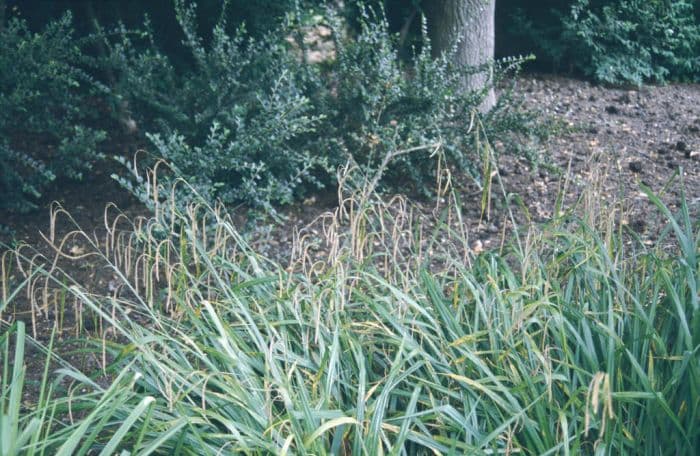
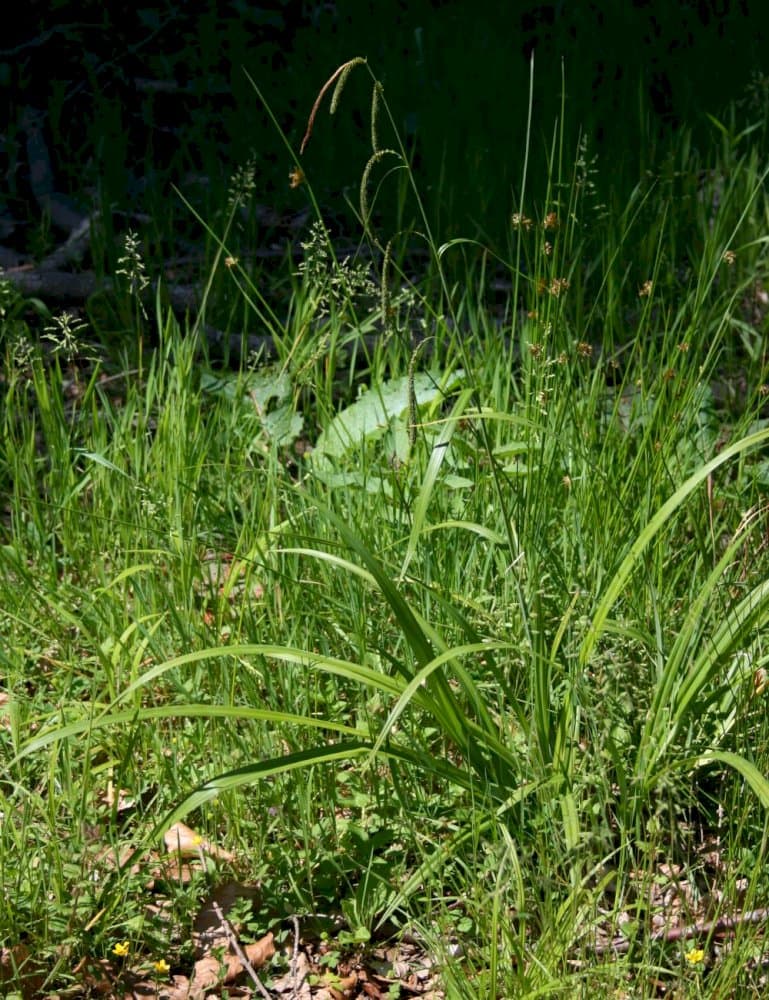
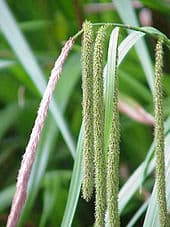
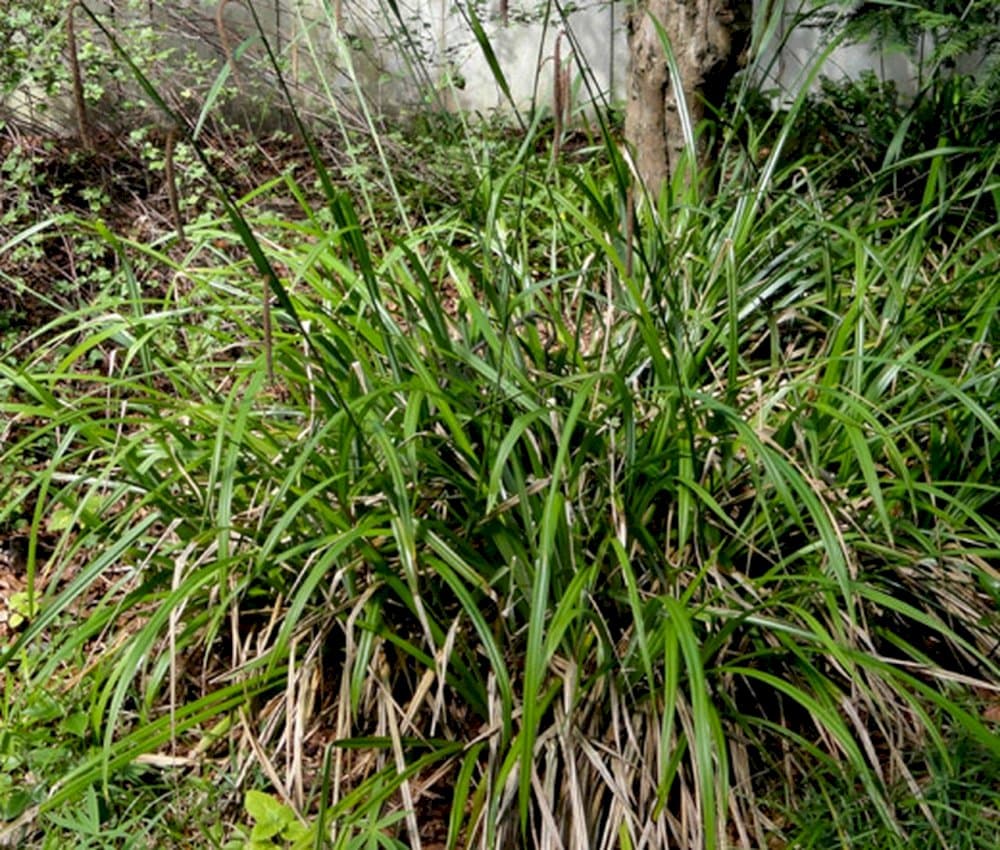
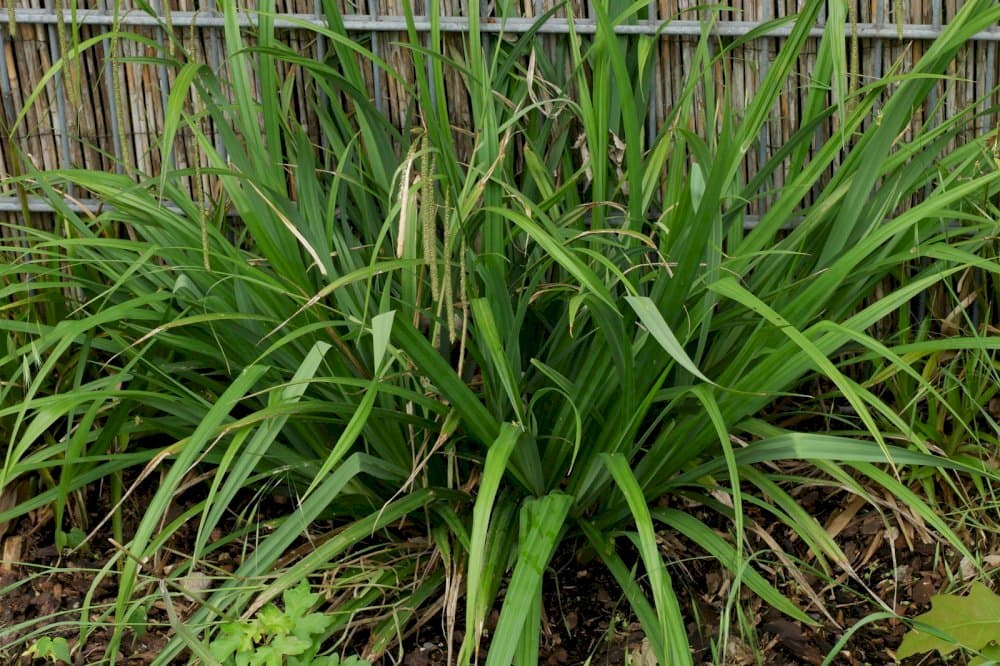
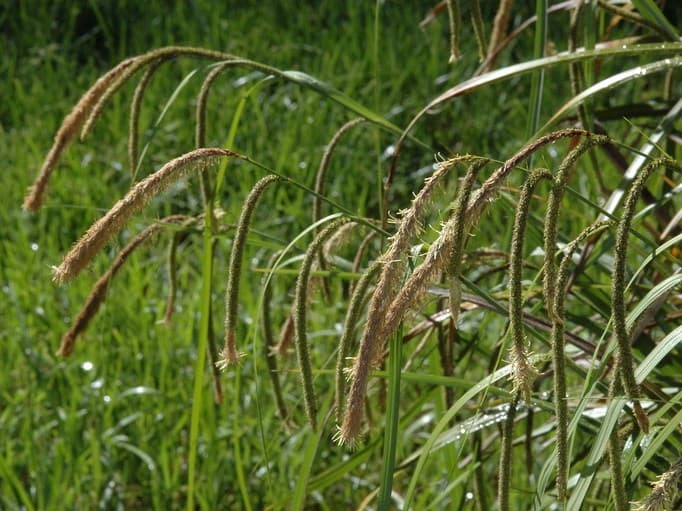
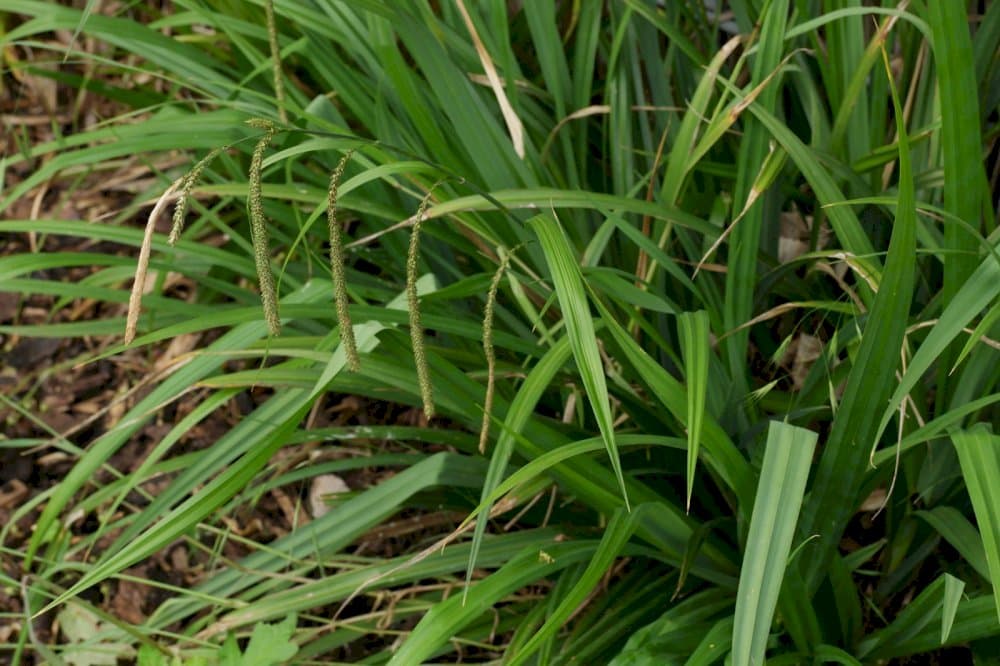
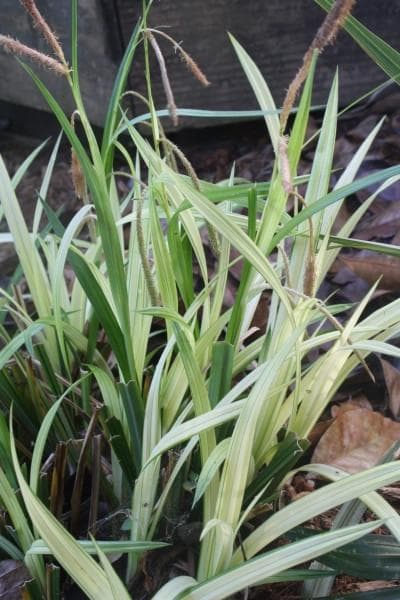
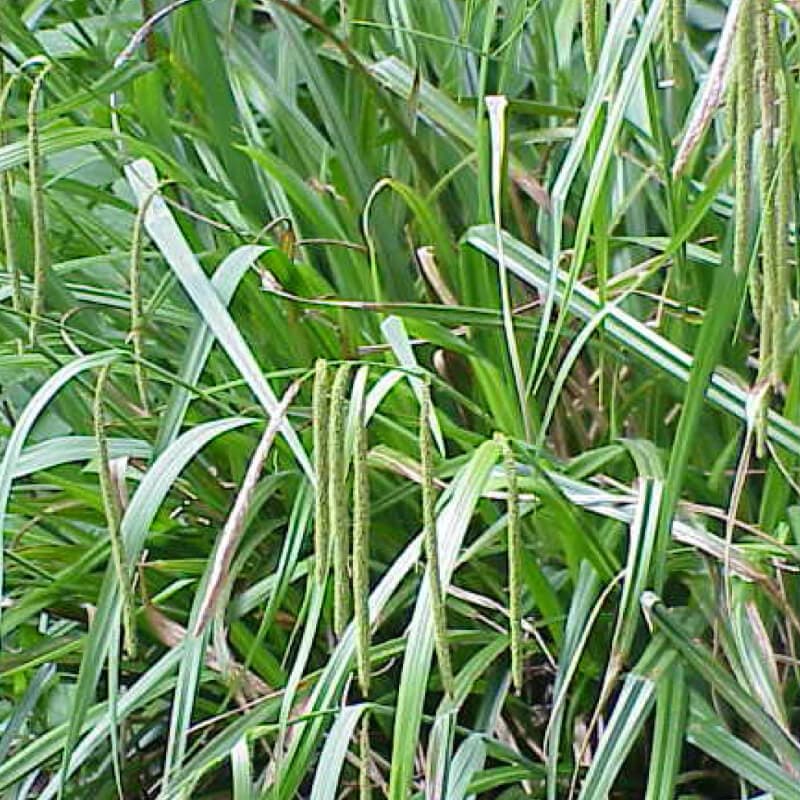
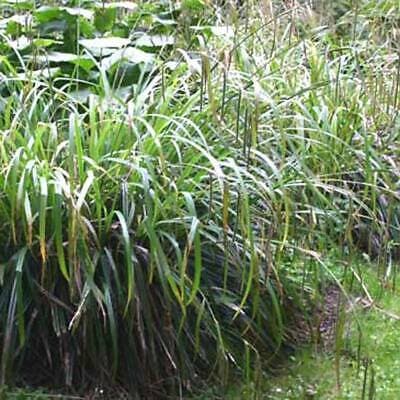
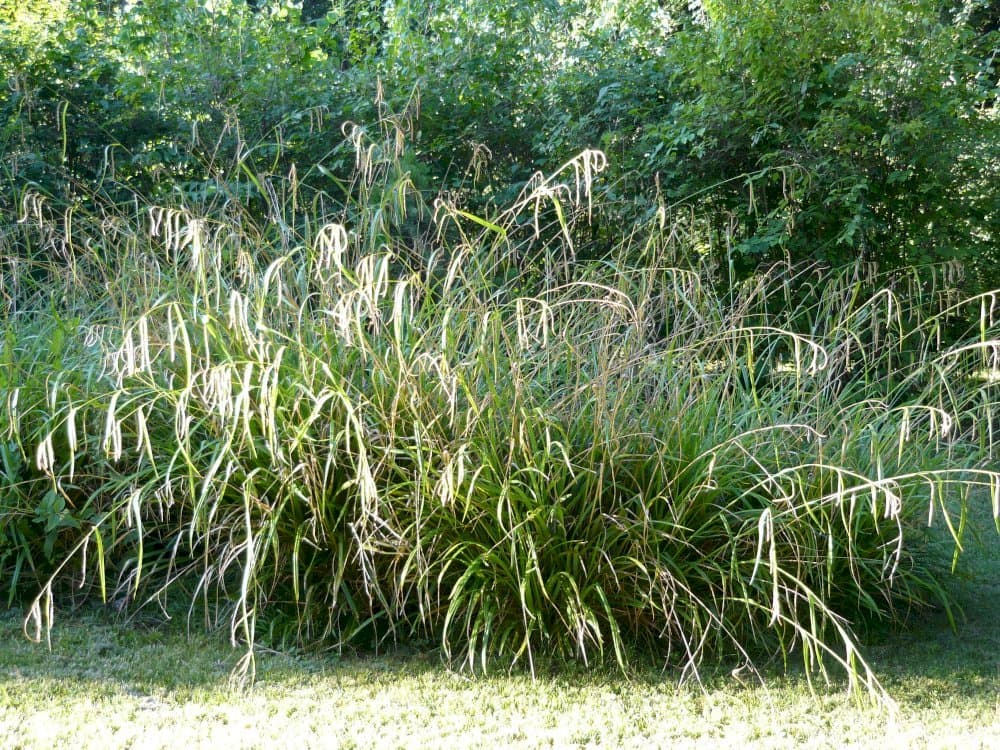
ABOUT
The plant known as the hanging sedge features a clump-forming habit with cascading, rich green foliage. Its leaves are long, strap-shaped with a notably droopy nature, giving the plant a slightly weeping appearance. These lush leaves can have a slightly rough texture to the touch. During its blooming period, the hanging sedge sports tall, arching flowering stems that bear long, greenish to brown flower spikes. These flower spikes hang delicately from the stems, swaying gracefully with the breeze. After flowering, the spikes will develop into small seed capsules. The overall impression of the plant is one of elegant, pendulous greenery that adds a soft texture to the landscape.
About this plant
 Names
NamesFamily
Cyperaceae
Synonyms
Hanging Sedge, Weeping Sedge, Pendulous Sedge
Common names
Carex maxima, Carex pendula var. maxima, Vignea pendula, Vignea maxima.
 Toxicity
ToxicityTo humans
Weeping sedge (Carex pendula) is not widely known to be toxic to humans. There is no common documentation on the toxicity levels or the clinical symptoms of poisoning from ingesting this plant. However, as with any plant, individual allergies or sensitivities could potentially cause mild stomach upset or dermatitis in some people upon handling or accidental ingestion.
To pets
The weeping sedge is not typically listed as a poisonous plant to pets such as cats and dogs. This implies that if a pet were to consume parts of the weeping sedge, it would likely not result in severe poisoning. That said, individual animals may experience varying reactions to ingesting plant material, which could range from no symptoms at all to mild gastrointestinal upset, such as vomiting or diarrhea, particularly if consumed in large quantities or the animal has a specific sensitivity to the plant.
 Characteristics
CharacteristicsLife cycle
Perennials
Foliage type
Evergreen
Color of leaves
Green
Flower color
Brown
Height
3-4 feet (0.9-1.2 meters)
Spread
2-3 feet (0.6-0.9 meters)
Plant type
Herb
Hardiness zones
5
Native area
Europe
Benefits
 General Benefits
General Benefits- Erosion Control: Carex pendula has strong root systems which help stabilize soil and prevent erosion.
- Wildlife Habitat: Provides shelter and nesting material for birds, as well as a food source for caterpillars and other insects.
- Aesthetic Appeal: Its pendulous, grass-like leaves and flower spikes add a lush, green texture to garden designs.
- Low Maintenance: Tolerant of a variety of conditions and requires minimal upkeep once established.
- Drought Resistance: Once established, it can survive periods of dryness, reducing the need for frequent watering.
- Flood Tolerance: Can tolerate wet and boggy conditions, making it suitable for rain gardens and water edges.
- Shade Tolerance: Grows well in partially shaded areas where other plants might struggle to thrive.
- Variety of Habitats: Adaptable to a range of habitats, from woodlands to riparian zones, providing versatility in landscaping uses.
 Medical Properties
Medical Properties- This plant is not used for medical purposes.
 Air-purifying Qualities
Air-purifying QualitiesThis plant is not specifically known for air purifying qualities.
 Other Uses
Other Uses- Craft Material: The long, flexible leaves of Carex pendula, commonly known as European pendulous sedge, can be used in basket weaving and as natural ties in garden trellising.
- Erosion Control: The plant's extensive root system helps stabilize soil on slopes and riverbanks, reducing erosion.
- Habitat Creation: This sedge provides an excellent habitat for insects and birds when grown in large clumps in its natural setting.
- Ornamental Uses: Due to its graceful, weeping habit and attractive seed heads, Carex pendula is often used in landscape design for visual interest.
- Privacy Screening: The tall and dense nature of this plant makes it suitable for creating natural privacy screens in gardens or balconies.
- Sound Dampening: Planted in masses, Carex pendula can help to reduce noise pollution in urban gardens.
- Textile Dye: The plant parts, such as leaves and flowers, can be used to produce a green dye for textiles.
- Thatching: In historical contexts, the plant has been used for thatching roofs because of its water-resistant and durable properties.
- Livestock Bedding: Dried foliage of the sedge can serve as bedding material for livestock in rural or traditional farming practices.
- Green Roof Planting: Its adaptability to various soil conditions makes it a candidate species for green roof installations.
Interesting Facts
 Feng Shui
Feng ShuiHanging Sedge is not used in Feng Shui practice.
 Zodiac Sign Compitability
Zodiac Sign CompitabilityHanging Sedge is not used in astrology practice.
 Plant Symbolism
Plant Symbolism- Adaptability: Carex pendula, commonly known as the hanging sedge, thrives in various environments, symbolizing the ability to adapt and flourish in different life situations.
- Resilience: Hanging sedge is a hardy plant able to withstand challenging conditions, representing the quality of resilience in facing life's hardships.
- Protection: With its dense, grass-like leaves, hanging sedge can symbolize protection, providing a safe haven for wildlife, much like it does in its natural habitat.
- Bending without Breaking: As suggested by its name and pendulous inflorescences, hanging sedge symbolizes the idea of bending without breaking, emphasizing the importance of flexibility and endurance in life.
 Water
WaterWater the Weeping Sedge to keep the soil consistently moist but not waterlogged. During the active growing season in spring and summer, water thoroughly once a week with about a gallon of water per plant. Adjust the frequency during hotter, drier periods, potentially watering twice a week, and reduce watering in the cooler months to prevent soggy conditions. Avoid letting the soil dry out completely, as Weeping Sedge prefers a damp environment. Always use a gentle flow to avoid disturbing the soil around the roots.
 Light
LightWeeping Sedge thrives in partial shade to full sun. However, in hot climates, the plant benefits from afternoon shade to protect it from the intense heat. The ideal spot for Weeping Sedge would be one where it receives morning sunlight and is sheltered from the harshest midday rays, such as under the dappled light of a loosely branched tree.
 Temperature
TemperatureWeeping Sedge does well in a wide range of temperatures, typically between 40 and 80 degrees Fahrenheit. It can tolerate temperatures down to about 20 degrees Fahrenheit but requires protection or mulching in colder climates to survive winter freezes. The ideal conditions for the plant are the moderate temperatures of its native habitats.
 Pruning
PruningPruning Weeping Sedge helps maintain its shape and remove dead or yellowing foliage. Trim back the foliage in late winter or early spring before new growth begins. This is also the time to cut out any damaged or overly long leaves. Pruning once a year is usually enough to keep Weeping Sedge looking tidy.
 Cleaning
CleaningAs needed
 Soil
SoilWeeping sedge, commonly known as Carex pendula, thrives best in a fertile, moist but well-draining soil mix with a slightly acidic to neutral pH of 5.5 to 7.0. A mixture of loam, peat, and sand in equal parts can provide the right balance of nutrients, aeration, and moisture retention for optimal growth.
 Repotting
RepottingWeeping sedge should be repotted every 2 to 3 years to prevent it from becoming root-bound and to refresh the soil. The best time to repot is in the early spring before the start of the growing season.
 Humidity & Misting
Humidity & MistingWeeping sedge requires high humidity levels to thrive, ideally around 60% to 70%. It is tolerant of a wide range of humidity levels but prefers consistently moist air.
 Suitable locations
Suitable locationsIndoor
Place Weeping sedge in bright, indirect light with high humidity.
Outdoor
Plant Weeping sedge in partial shade and maintain soil moisture.
Hardiness zone
5-9 USDA
 Life cycle
Life cycleCarex pendula, commonly known as pendulous sedge or weeping sedge, begins its life as a seed, which germinates in damp soils typically in spring. The seedling emerges and develops into a juvenile plant with grass-like leaves, gradually forming dense clumps through vegetative growth. The plant reaches maturity within a few years, developing long, drooping flower spikes that are wind-pollinated in late spring to mid-summer. Following pollination, seeds are produced and dispersed by wind or water, or through attachment to animals. The plant is perennial, implying that above-ground growth dies back in winter, but the underground rhizomes persist, allowing for new growth each spring. Pendulous sedge can also spread through these rhizomes, giving rise to new plants and expanding the colony.
 Propogation
PropogationPropogation time
Spring-early summer
The most common method of propagating Carex pendula, commonly known as hanging sedge or weeping sedge, is through division. This is ideally done in the spring when the plant is actively growing. To propagate by division, a clump of the plant is dug up and carefully split into smaller sections, ensuring that each section has a portion of the root system intact. These new divisions can then be replanted in moist soil at the same depth they were originally growing. It's important to water these new plantings well to help establish the roots. Dividing hanging sedge is a straightforward way to create new plants and manage the size and spread of the plant in a landscape.
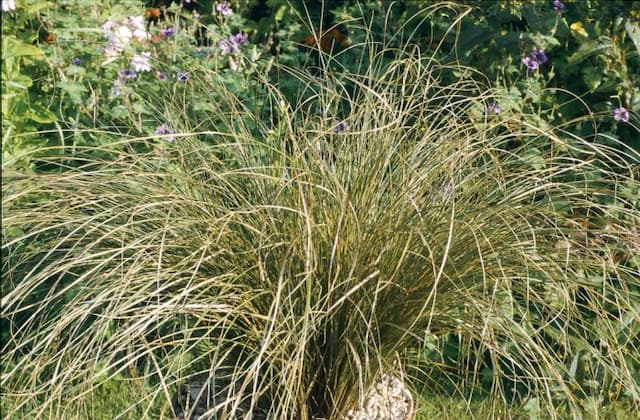



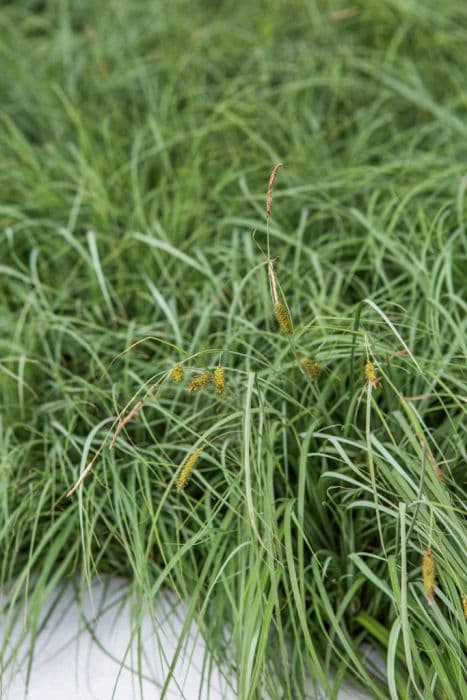
![Japanese sedge [Everest]](/_next/image?url=https%3A%2F%2Fplants-admin.emdemapps.com%2Fimages%2Fplants%2F%2Fimages%2F604b5b6de0548.png&w=640&q=75)



